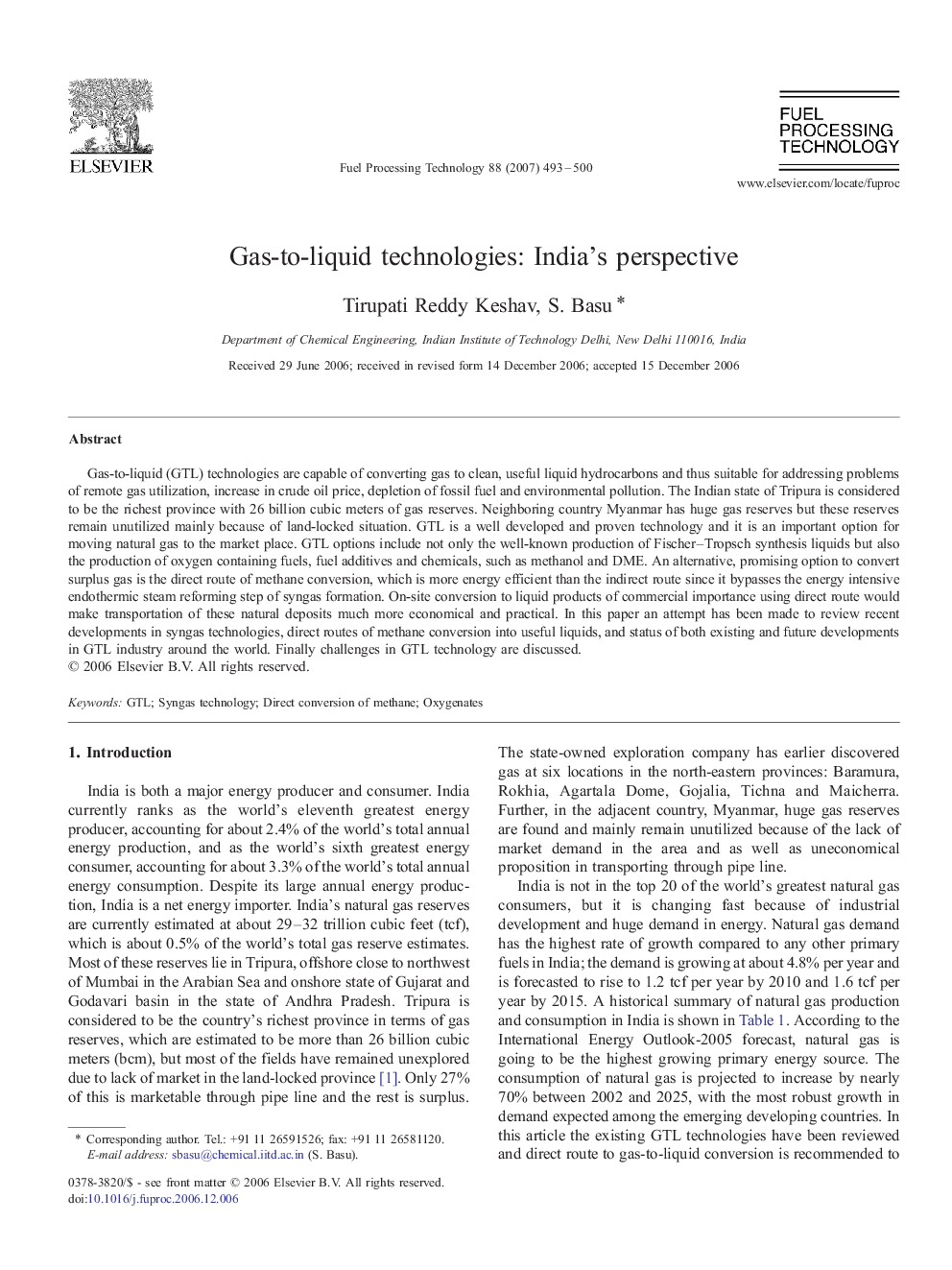| Article ID | Journal | Published Year | Pages | File Type |
|---|---|---|---|---|
| 211502 | Fuel Processing Technology | 2007 | 8 Pages |
Gas-to-liquid (GTL) technologies are capable of converting gas to clean, useful liquid hydrocarbons and thus suitable for addressing problems of remote gas utilization, increase in crude oil price, depletion of fossil fuel and environmental pollution. The Indian state of Tripura is considered to be the richest province with 26 billion cubic meters of gas reserves. Neighboring country Myanmar has huge gas reserves but these reserves remain unutilized mainly because of land-locked situation. GTL is a well developed and proven technology and it is an important option for moving natural gas to the market place. GTL options include not only the well-known production of Fischer–Tropsch synthesis liquids but also the production of oxygen containing fuels, fuel additives and chemicals, such as methanol and DME. An alternative, promising option to convert surplus gas is the direct route of methane conversion, which is more energy efficient than the indirect route since it bypasses the energy intensive endothermic steam reforming step of syngas formation. On-site conversion to liquid products of commercial importance using direct route would make transportation of these natural deposits much more economical and practical. In this paper an attempt has been made to review recent developments in syngas technologies, direct routes of methane conversion into useful liquids, and status of both existing and future developments in GTL industry around the world. Finally challenges in GTL technology are discussed.
